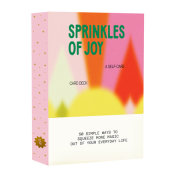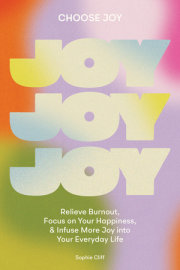We’re sold the idea that productivity will solve our problems, that our joy is waiting for us on the other side of a new routine or approach. But what if actually, the pursuit of productivity is taking us further away from our priorities? What if by constantly trying to do, be and achieve more, we’re sacrificing the things that matter most – our joy, our connections, our wellbeing? What if to get stuff done while also finding more joy in our lives, we need to tackle things differently?
How did we get here?
The idea that increasing our productivity levels will create more time for the stuff that matters isn’t a new one. Back in 1930, the economist John Maynard Keynes argued that the greatest challenge his grandchildren and great-grandchildren would face would be boredom. He predicted that by 2030, our typical work week would be just 15 hours long, with his assumption being that as our living standards increased and technology advanced in labour-saving ways, humans would opt to work less and increase their leisure time. He essentially forecasted that our working patterns would be the opposite of what we’ve been used to, with a 2-day work week and a 5-day weekend. Put simply, he was optimistic that by improving our productivity levels, we’d have more time to spend doing the stuff we loved.
The conditions that Keynes forecasted would be needed to make this change happen – economic growth, rapid technological advancements, increased global productivity – have all been achieved or even exceeded, and yet, we find ourselves feeling busier than ever before. Instead of opting to reduce our working hours or carving out more time for rest, we’ve used the advances the last century has brought to fill our time up even more. It seems like as our opportunities to be productive have increased, we’ve simply demanded more of ourselves.
For example, while technology may have streamlined some tasks at work and saved us time in other areas of our lives, the arrival of social media has piled on extra pressure to be even more productive. This sentiment has been captured by a new term, announcement culture, coined by British entrepreneur and influencer, Grace Beverley. In her book, Working Hard, Hardly Working, released in 2021, she defines announcement culture as: “our ever-growing need to announce everything we’re doing, therefore perpetuating our anxiety of having ‘things’ to announce in the first place. [We] judge our success and that of others on the quantity (rather than the quality) of announcements made”.
This sentiment seems to be backed up by academic research. A paper published in 2017 (Bellezza et al), found that a busy and overworked lifestyle has become a status symbol, used to display importance in much the same way as expensive cars or flashy designer goods are.The authors found that being busy drove a perception that a person had desired human capital characteristics, such as competence and ambition, and also that they were scarce and in demand. When someone asks us how we are and we reel of a list of our recent achievements or the things packing our schedule, what we’re really trying to communicate is that we’re important, that we’re doing well, that other people see the value that we add. When you look at it that way, it’s little wonder that we’re all on a quest to become more productive and get even more done.
The real clincher though, the belief at the heart of our drive for productivity for so many of us, is the idea that doing, being and achieving more will somehow make us happier. How many times have you heard someone say, “I’ll be happy when…”? How many times have you said it yourself? I know I’ve certainly uttered that phrase hundreds of times in my own life. I’ll be happy when I get a new job. I’ll be happy when this project is finished. I’ll be happy when I earn a bit more money. I’ll be happy when I’m feeling fitter. I’ll be happy when we book that dream trip or buy a new house or land a new exciting new client.
I used to truly believe that achieving or attaining something would make me happy until I learned about arrival fallacy. The term arrival fallacy was coined by Harvard Psychologist Dr Tal Ben-Shahar, and it refers to the false belief that reaching a valued destination can sustain happiness. It essentially disproves the idea that once we attain a goal or we reach a certain destination we will achieve everlasting happiness, busting the myth that “we’ll be happy when”,
Ben-Shahar argues that we’re more likely to experience arrival fallacy if we start off unhappy and believe that achieving a big goal or milestone will cure our sadness. When success doesn’t make us feel any happier, we can become disappointed and even hopeless and depressed. We then place all of our energy into a different goal, believing that the next achievement will quell our sadness, and the cycle repeats itself. We can find ourselves locked in a negative spiral, and worse, while pouring all of our energy into the next thing we think will make us happy, we’re often missing out on the joy available to us right here, right now.
Put simply, it’s highly unlikely that any goal or achievement will be enough to make us feel content and fulfilled. If our goal is to be happy, we need to be prioritising that in our everyday lives, rather than sacrificing it in order to get more done.
Copyright © 2024 by Sophie Cliff. All rights reserved. No part of this excerpt may be reproduced or reprinted without permission in writing from the publisher.














